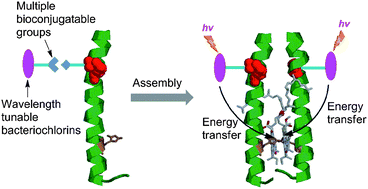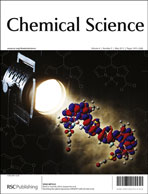The challenge of creating both pigment building blocks and scaffolding to organize a large number of such pigments has long constituted a central impediment to the construction of artificial light-harvesting architectures. Light-harvesting (LH) antennas in photosynthetic bacteria are formed in a two-tiered self-assembly process wherein (1) a peptide dyad containing two bacteriochlorophyll a molecules forms, and (2) the dyads associate to form cyclic oligomers composed of 8 or 9 dyads in LH2 and 15 or 16 in LH1 of purple photosynthetic bacteria. While such antenna systems generally have near-quantitative transfer of excitation energy among pigments, only a fraction of the solar spectrum is typically absorbed. A platform architecture for study of light-harvesting phenomena has been developed that employs native photosynthetic peptide analogs, native bacteriochlorophyll a, and synthetic near-infrared-absorbing bacteriochlorins. Herein, the syntheses of 10 lipophilic bacteriochlorins are reported, of which 7 contain bioconjugatable handles (maleimide, iodoacetamide, formyl, carboxylic acid) for attachment to the peptide chassis. The bioconjugatable bacteriochlorins typically exhibit a long-wavelength absorption band in the range 710 to 820 nm, fluorescence yield of 0.1–0.2, and lifetime of the lowest singlet excited state of 2–5 ns. The α-helical structure of the native-like peptide is retained upon conjugation with a synthetic bacteriochlorin, as judged by single-reflection infrared studies. Static and time-resolved optical studies of the oligomeric biohybrid architectures in aqueous detergent solution reveal efficient (∼90%) excitation energy transfer from the attached bacteriochlorin to the native-like bacteriochlorophyll a sites. The biohybrid light-harvesting architectures thus exploit the self-constituting features of the natural systems yet enable versatile incorporation of members from a palette of synthetic chromophores, thereby opening the door to a wide variety of studies in artificial photosynthesis.

You have access to this article
 Please wait while we load your content...
Something went wrong. Try again?
Please wait while we load your content...
Something went wrong. Try again?


 Please wait while we load your content...
Please wait while we load your content...